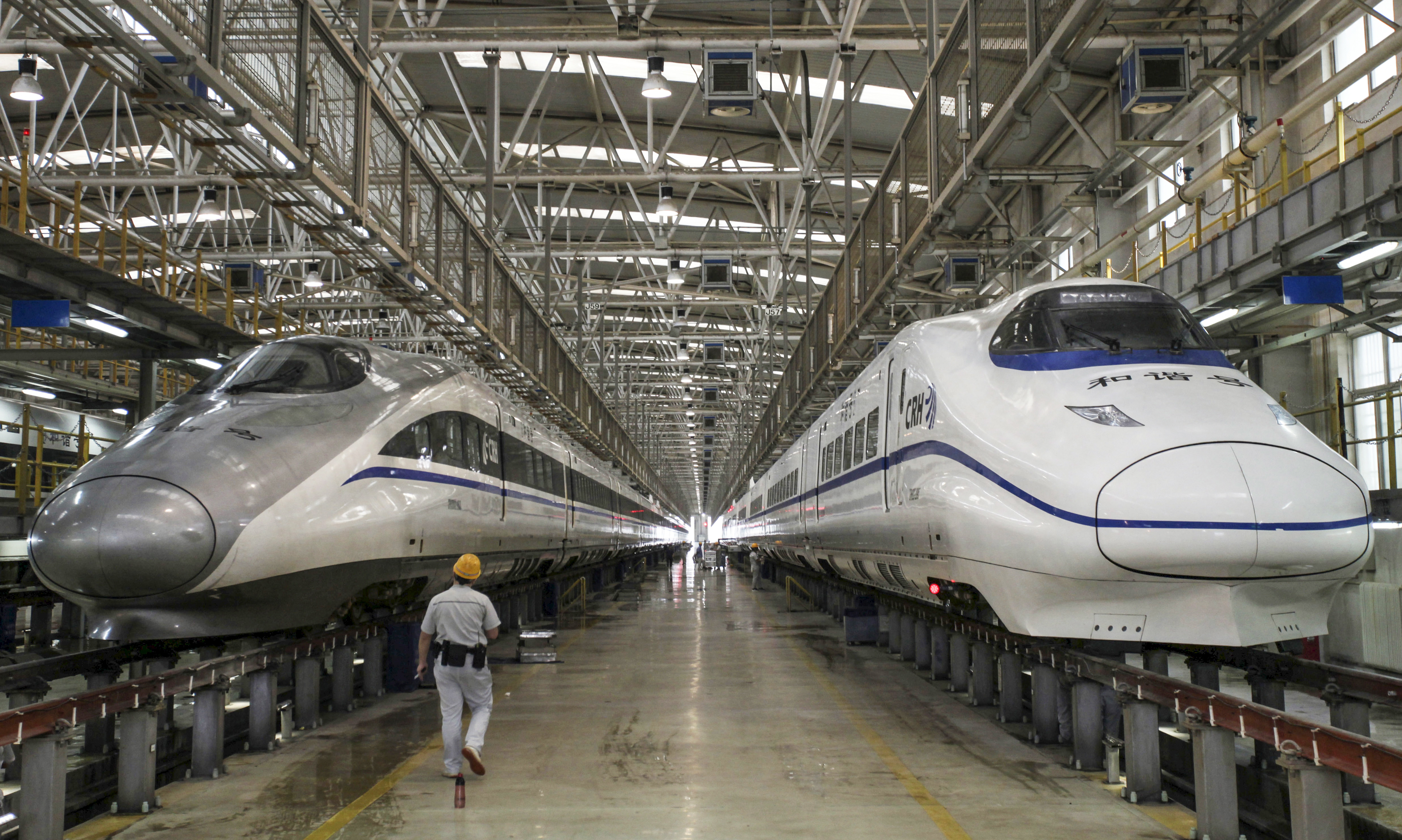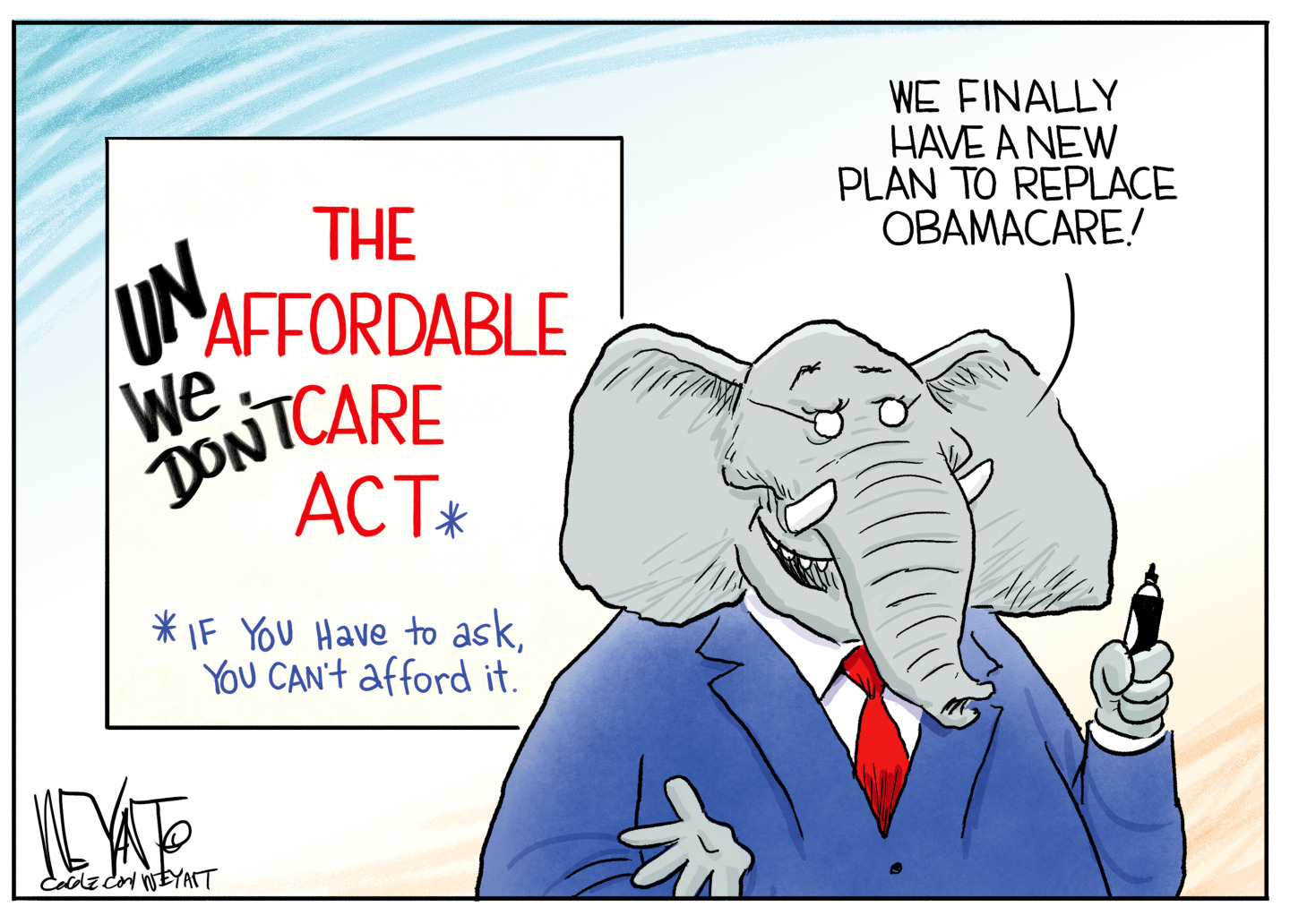China's plan to run the world
The People's Republic is investing trillions to build railways, ports, and telecommunications in other countries. Why?

The People's Republic is investing trillions to build railways, ports, and telecommunications in other countries. Here's everything you need to know:
What is the plan?
China wants to make the 21st century into the Chinese Century, and its "One Belt, One Road" initiative is the key. It's a staggeringly massive development project spanning dozens of countries — the most ambitious global engineering endeavor the world has seen since the Roman Empire. The overland "belt" part entails highways, railways, and all their supporting infrastructure, including power and the internet, across multiple land routes from western China through Central Asia to the Middle East and Europe. The maritime "road" part consists of new ports, ships, and sea routes from southern China across the Indian Ocean to Africa and through the Mediterranean Sea to Europe. If all these projects bear fruit, trade along these routes will exceed $2.5 trillion a year. Already, China has invested $1 trillion in the project, and 68 governments and international organizations have agreed to participate. China is "attempting to provide an ideological and moral alternative to the United States, the West, and liberalism," said Dan Garrett, a former Pentagon intelligence analyst. The goal is "to return China to its formal (imperial) glory as the center of the world."
The Week
Escape your echo chamber. Get the facts behind the news, plus analysis from multiple perspectives.

Sign up for The Week's Free Newsletters
From our morning news briefing to a weekly Good News Newsletter, get the best of The Week delivered directly to your inbox.
From our morning news briefing to a weekly Good News Newsletter, get the best of The Week delivered directly to your inbox.
How did it come about?
Since the 1970s, China's strategic philosophy had been Deng Xiaoping's slogan "Hide your brightness, bide your time." But in 2013, newly elected President Xi Jinping announced that China's moment had arrived: It was time "to achieve the Chinese Dream of great rejuvenation." Couched in flowery terms, Xi's grand vision is to re-create the ancient Silk Road that made China a global trading power centuries ago, and to bind the world together in win-win economic relationships. "Spanning thousands of miles and years, the ancient silk routes embody the spirit of peace and cooperation, openness and inclusiveness, mutual learning and mutual benefit," Xi said at the Belt and Road Forum last month. Heads of state attending included Indonesia's Joko Widodo, Turkey's Recep Tayyip Erdogan, and Russia's Vladimir Putin. The U.S. also sent a delegation.
Why now?
China says it wants to help the rest of the world achieve the economic miracle it has achieved. In the past 35 years, China has reduced the percentage of its population in extreme poverty from 88 percent to less than 2 percent. Clearly, though, the project is not altruistic. China must expand to foreign markets in order to maintain growth and provide jobs to its 1.4 billion people. Moving factories with excess capacity abroad will help the country reduce its supply glut, and Chinese companies will benefit in two ways: They will get most of the infrastructure contracts, and the new trade routes will enable them to export their goods more easily.
A free daily email with the biggest news stories of the day – and the best features from TheWeek.com
How does this affect the U.S.?
The Chinese have invited the U.S. to participate. But they see President Trump's "America First" protectionist policies as a great opportunity to replace the U.S. as the driving engine of global trade. The Trans-Pacific Partnership, a 12-nation trade deal negotiated by the Obama administration, was designed to provide a counterweight to China's growing economic dominance in Asia. The largest regional trade accord ever negotiated, the pact would have created a free-trade zone for 40 percent of the world's economy, including the U.S., and required trade partners to adhere to American labor and environmental standards. When Trump canceled the pact on his first day in office, he said he was protecting American workers from a bad deal. But most economic analysts said the pullout left the U.S. with little leverage in Asia. "There is a void that China's going to fill," said Max Baucus, a former ambassador to China.
What has been built so far?
Beijing is finishing up a $590 million port in Djibouti, in East Africa, where the Gulf of Aden meets the Red Sea. Many projects have begun along the China-Pakistan economic corridor, including Pakistan's Port of Gwadar, near the Persian Gulf. One state-owned company, China Communications Construction Group, has already built 95 deepwater ports, 10 airports, 152 bridges, and 2,080 railways in various Belt and Road countries. Indonesia's high-speed railway is being built and should open in 2019. Over the past decade, Chinese construction firms have also been active across Africa and South America, building power plants in Ecuador, housing in Venezuela, and glass and cement factories in Ethiopia, to name just a few.
Will these countries benefit?
Yes, but at a price. China's state-owned firms have a big advantage over local companies in bidding to build these projects. And there are social concerns: China's own rapid development has been built on seized land and forced displacement of millions of people, and it may export that model. But the main worry is strategic. Host governments are effectively ceding to China control of very sensitive infrastructure, such as telecommunications and ports. Economic dominance can also serve to promote military goals. The deepwater ports China is building in Pakistan, near the entrance to the Persian Gulf, and in Djibouti, on the Red Sea, aren't just useful for trade: They can also provide Chinese naval vessels with ports and access to key waterways. Tom Miller, author of China's Asian Dream: Empire Building Along the New Silk Road, says many nations participating in the project rightly wonder if it's "a smokescreen for strategic control."
Leading on renewables
China is also taking the lead on solar and other forms of renewable energy, investing more than any other nation — $88 billion last year alone. Already, six of the world's 10 biggest suppliers of solar panels are Chinese, including the top two. Last week it completed the world's largest floating solar array, built on the site of a flooded former coal-mining town. It expects to add 2.6 million jobs in the industry every year through 2020. This year it also plans to create the world's biggest emissions trading system. Now that the U.S. has abandoned the Paris climate accord, "the world is looking for a climate champion," said Nicholas Stern of the Global Commission on the Economy and Climate. "In China, it has one."
-
 A luxury walking tour in Western Australia
A luxury walking tour in Western AustraliaThe Week Recommends Walk through an ‘ancient forest’ and listen to the ‘gentle hushing’ of the upper canopy
-
 What Nick Fuentes and the Groypers want
What Nick Fuentes and the Groypers wantThe Explainer White supremacism has a new face in the US: a clean-cut 27-year-old with a vast social media following
-
 5 highly amusing cartoons about rising health insurance premiums
5 highly amusing cartoons about rising health insurance premiumsCartoon Artists take on the ACA, Christmas road hazards, and more
-
 How Bulgaria’s government fell amid mass protests
How Bulgaria’s government fell amid mass protestsThe Explainer The country’s prime minister resigned as part of the fallout
-
 Femicide: Italy’s newest crime
Femicide: Italy’s newest crimeThe Explainer Landmark law to criminalise murder of a woman as an ‘act of hatred’ or ‘subjugation’ but critics say Italy is still deeply patriarchal
-
 Brazil’s Bolsonaro behind bars after appeals run out
Brazil’s Bolsonaro behind bars after appeals run outSpeed Read He will serve 27 years in prison
-
 Americans traveling abroad face renewed criticism in the Trump era
Americans traveling abroad face renewed criticism in the Trump eraThe Explainer Some of Trump’s behavior has Americans being questioned
-
 Nigeria confused by Trump invasion threat
Nigeria confused by Trump invasion threatSpeed Read Trump has claimed the country is persecuting Christians
-
 Sanae Takaichi: Japan’s Iron Lady set to be the country’s first woman prime minister
Sanae Takaichi: Japan’s Iron Lady set to be the country’s first woman prime ministerIn the Spotlight Takaichi is a member of Japan’s conservative, nationalist Liberal Democratic Party
-
 Russia is ‘helping China’ prepare for an invasion of Taiwan
Russia is ‘helping China’ prepare for an invasion of TaiwanIn the Spotlight Russia is reportedly allowing China access to military training
-
 Interpol arrests hundreds in Africa-wide sextortion crackdown
Interpol arrests hundreds in Africa-wide sextortion crackdownIN THE SPOTLIGHT A series of stings disrupts major cybercrime operations as law enforcement estimates millions in losses from schemes designed to prey on lonely users